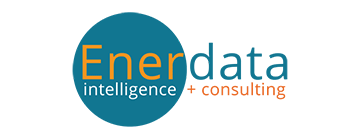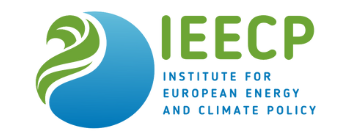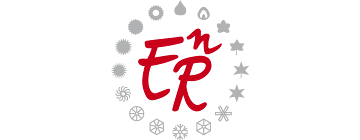Overview
In 2022, the final energy consumption in Lithuania was 5.4 Mtoe. It has been increasing during the period 2000-2022 by 1.6% per year. Transport, the largest consuming sector, recorded 12 percentage points increase in its share in total final energy consumption since 2000 – from 27.2% to 39.2% in 2022. Over the same period, the residential sector decreased by 8.2 percentage points (from 37.3% to 29.1%), industry decreased by 2.9 percentage points (from 20.7% to 17.8%), while service kept a steady share around 12%. The building sector, comprising residential and services sectors, accounted for 40.7% of final energy consumption in 2022.
Figure 1: Final energy consumption by sector (with climatic corrections)
Source: ODYSSEEEnergy efficiency for final consumers, as measured by ODEX, improved by an average of 2.0% per year from 2000 to 2022 or 37% over the period. The largest gains of energy efficiency progress were in the industry (4.3% per year). In the transport sector, energy efficiency improvements have been improving at the steady pace of 1.6% per year. In the residential sector, due to old building renovation process, energy efficiency improvements were about 1.6% per year. In the service sector, the energy efficiency improvements have been steady (0.6% per year).
Figure 2: Technical Energy Efficiency Index
Source: ODYSSEEThe Law on Energy Efficiency in Lithuania sets mandatory national energy efficiency targets. During 2021-2030 to save amounts of energy each year that correspond to 0.8% of the average final energy consumed during 2016-2018. Such amounts of energy must be saved every year from 2031 until 2050, except for the case if the long-term energy and climate goals of the European Union for 2050 will be achieved earlier. The Law ensures that in 2030, the primary energy consumption is no more than 5,462 ktoe, the final energy consumption is no more than 4,526 ktoe, and the total amount of energy saved by energy efficiency improvement measures is no less than 27,280 GWh in Lithuania.
The National Energy Independence Strategy (NEIS) (2024) is the leading energy policy document, which sets the main strategical goals for Lithuanian energy sector development and their implementation directions up to 2050. The targeted indicator of energy efficiency is final energy consumption not exceeding 51 TWh in 2030, 46 TWh in 2040 and 42 TWh in 2050 in Lithuania. The main directions for achieving the goal of increasing energy efficiency are 1) to promote complex renovation of multi-apartment residential and public buildings; 2) to increase the efficiency of energy consumption by developing a high value-added created and energy-efficient industries; and 3) to promote the electrification of transport, especially of heavy-duty road vehicles, the use of electric cars and their charging infrastructure development.
Lithuania prepared the National Energy and Climate Action Plan (NECP). Within the Dimension of Energy Efficiency, it assumes to implement existing and planned policy measures. The cumulative energy savings target for 2030 will be achieved with 34.5 TWh from existing energy efficiency measures and a further 11.9 TWh from planned energy savings.
Table 1: Sample of cross-cutting measures
| Measures | NECP measures | Description | Expected savings, impact evaluation | More information available |
|---|---|---|---|---|
| EU related: Energy Efficiency Directive (2012/27/EC) - Law on the Energy Efficiency | Yes | The purpose of the Law on Energy Efficiency is to ensure more economical energy consumption in all areas of the Lithuanian economy, in accordance with the obligations of the Republic of Lithuania to increase energy efficiency established in the legal acts of the European Union, and to create preconditions for efficient production, supply and consumption. | 0.23 TJ | Link |
| EU-related: Recast Ecodesign Directive for Energy-related Products (Directive 2009/125/EC) - Requirements for ecodesign for energy related products | Yes | It establishes a framework for setting of ecodesign requirements for energy related products with a view to ensure the free movement of products within the internal market of the European Community. | 0.23 TJ | Link |
| National Energy Independency Strategy (2024) | Yes | It aims to implement fundamental changes in the energy sector - to ensure that as much energy is produced in Lithuania as it is consumed, and that the energy sector become a fully climate-neutral sector by 2050. Implemented changes will provide the opportunity to accelerate economic development, the transition to a new energy system, will contribute to the growth of public welfare and will ensure the interests of national security | 0.23 TJ | Link |
Buildings
The space heating consumption per m2 of households decreased by 29% over the period and amounted to 9.78 koe/m2 in 2022. Electricity consumption for electrical appliances per dwelling has increased from 0.09 toe/dw in 2000 to 0.14 toe/dw in 2022. Water heating has increased by around 22% and accounted 0.12 toe/dw in 2022. Cooking consumption remained almost stable and accounted 0.06 toe/dw in 2022.
Figure 3: Energy consumption of household space heating per m2 (with climatic corrections)
Source: ODYSSEEFigure 4: Energy consumption per dwelling by end-use (except space heating)
Source: ODYSSEEIn 2022, the total residential energy consumption was about 1.56 Mtoe. The residents' choice to have larger homes, the increased number of dwellings, the increased number of appliances, the climate and some other reasons explained the increasing energy consumption in residential dwellings, by 0.29 Mtoe, 0.22 Mtoe, 0.14 Mtoe, 0.05 Mtoe and 0.05 Mtoe respectively. These increases were not fully compensated by technical energy savings (0.55 Mtoe). Therefore, the total residential energy consumption was by 10% higher in 2022 than in 2000.
Figure 5: Main drivers of the energy consumption variation in households
Source: ODYSSEEThe electricity consumption per employee has been increasing by 1.7%/year since 2000 due to the growing number of new electrical appliances, such as IT devices, telecommunication devices as well as air conditioning. Such trend is not only observed in Lithuania, but in almost all EU countries. The total energy consumption per employee has been increasing by 0.1%/year over the same period.
Figure 6: Energy and electricity consumption per employee in services (with climatic corrections)
Source: ODYSSEEWith the aim to increase energy efficiency, Lithuania implements programmes and measures in building sector. In the framework of Programme for Renovation of Multifamily Buildings, soft loans (3% for 20 years, linear payment method) are provided to owners, while financial measures are given for the modernization of public buildings of Programme for Public buildings, Renovation of Public Buildings at National and Regional Levels, Modernization Programme for High Schools and Vocational Training Dormitories, Modernization Programme for Buildings of Educational Institutions Reducing Energy Consumption Costs, Climate Change Programme, Programme for Ignalina Public Buildings, Projects for Municipality Public Buildings. Financial resources from the State, municipal budgets, EU Structural Funds and other are used to upgrade buildings. During 2014-2020, the accumulated energy savings from the Programme for Renovation of Multifamily Buildings were 2982.69 GWh and those from the measures oriented towards public buildings were 573.7 GWh.
Table 2: Sample of policies and measures implemented in the building sector
| Measures | NECP measures | Description | Expected savings, impact evaluation | More information available |
|---|---|---|---|---|
| EU related: Promotion of the Use of Energy from Renewable Sources Directive (RED) - Law on Renewable Sources | Yes | The purpose of the Law is to ensure sustainable development of the use of RES, to promote further development and implementation of new technologies and consumption of produced energy, especially taking into account the international obligations and other objectives of national energy policy, taking into account requirements of security and reliability of energy supply, principles of ensuring protection of consumer. | 0.34 TJ | Link |
| EU Structural Funds 2021-2027 (Prosumers' investment into development of RES-E production capacities in Lithuania) | Yes | To support prosumers' investment into development of RES-E production capacities in Lithuania | 0.07 TJ | Link |
| EU Structural Funds for 2014-2020 (RES for Households) | Yes | Support to RES consumption and production in households | 0.07 TJ | Link |
Transport
In 2022, road transport accounted of 98% of the sector’s energy consumption. From 2000 to 2022 the share of cars in transport energy consumption has increased from 46% to 56.4% in 2022. The share of trucks and light vehicles consumption has decreased from 47% to 41.5%. The remaining consumption is split between rail (1.4%), motorcycles (0.5%) and inland water (0.2%).
Figure 7: Transport energy consumption by mode
Source: ODYSSEEThe passenger traffic by cars has been increased by 1.5% per year. The share of cars in split of traffic increased from 89% in 2000 to 93.5% in 2022. The passenger traffic by bus and rail has been decreased by 1.2%/year and 2.1%/year, respectively.
Figure 8: Modal split of inland passenger traffic
Source: ODYSSEEThe goods traffic (measured in tonne-kilometre) was about 40% higher in 2022 than in 2000, mostly due to freight traffic on road (4 times higher). In 2022, road traffic accounted for 52.4%, rail traffic 47.5% and water - 0.1% in freight transportation.
Figure 9: Modal split of inland freight traffic
Source: ODYSSEEThe final energy consumption in transport sector was 1.08 Mtoe higher in 2022 than in 2000. The split in modal shift, the growth in activity and other effects pushed up transport consumption (by 0.58 Mtoe, 0.49 Mtoe and 0.52 Mtoe respectively). This significant increase of energy consumption was not counterbalanced by energy savings (0.51 Mtoe).
Figure 10: Main drivers of the energy consumption variation in transport
Source: ODYSSEEIn transport sector, measures are focused on development of road infrastructure, upgrading of public transport fleets and informational/educational purposes like ecological driving or a day without car. EU Structural funds, State budget funds and financial resources from Special Programme for Climate Change are used. In addition, increased value added tax is applied to fuels and excise tax on some types of fuels, including gasoline, LPG and diesel. Great attention is paid to the implementation of energy efficiency tasks in the transport sector to develop sustainable mobility in cities, to improve traffic safety, to implement intelligent transport systems, for the introduction of more efficient means of transport, for the development of environmentally friendly transport. During 2014-2020, the financial support measures for Renovation of the city's public transport fleet and Local transport were implemented to renew the public transport fleet. The form of funding of the measures is a non-refundable subsidy. During 2018-2019 public transport vehicles were renewed in the cities of Radviliškis, Šiauliai, Klaipėda, Vilnius, Panevėžys, Kaunas. Renewal of public transport park allowed to save 6.51 GWh of energy during 2018-2020 and the increase in taxes permitted to save 4626,04 GWh during 2014-2019.
Table 3: Sample of policies and measures implemented in the transport sector
| Measures | NECP measures | Description | Expected savings, impact evaluation | More information available |
|---|---|---|---|---|
| EU Structural Funds 2021-2027 (Installation of private electric car charging points for individuals in individual homes/gardens) | Yes | Fizinių asmenų privačių elektromobilių įkrovimo prieigų įrengimas individualiuose namuose/soduose | 0.09 TJ | Link |
| EU Structural Funds 2021-2027 (Installation of private charging points for electric cars) | Yes | Privačių elektromobilių įkrovimo prieigų įrengimas | 0.09 TJ | Link |
| Installation of private electric vehicle charging access points for legal entities at workplaces (EU Structural Funds 2021-2027) | Yes | The measure was developed to implement means of fuel production from RES and to develop the infrastructure for their use in the transport sector. Juridinių asmenų privačių elektromobilių įkrovimo prieigų įrengimas darbovietėse | 0.09 TJ | Link |
Industry
The final energy consumption of industry increased by 22.0% between 2000 and 2022. The most important energy consumer is the chemical industry: its share increased significantly, from 20% in 2000 to 25% in 2022. The final energy consumption in chemical industry has been increasing during the period by 1.8% per year. The share of the other energy-intensive branches (non-metallic minerals, pulp and paper) decreased in comparison to 2000, from 25% to 22%.
Figure 11: Final energy consumption of industry by branch
Source: ODYSSEEIn 2022, the industry sector represented about 18% of the final energy consumption in Lithuania. The final energy consumption in industry was 0.17 Mtoe higher in 2022 than in 2000. Industry economic growth and structural changes pushed up the energy consumption (by 1.16 Mtoe and 0.28 Mtoe respectively). These effects were not fully offset by energy savings (1.1 Mtoe) and by other effects (0.16 Mtoe).
Figure 12: Main drivers of the energy consumption variation in industry
Source: ODYSSEEThe Lithuanian policy in terms of energy efficiency in the industrial sector focuses on financial incentive measures for energy efficiency investment, CHP investment, investments in clean fuels and capacities (renewables and waste). Investment subsidies and partial compensation of interest for energy efficiency and renewable energy projects are provided through EU Structural Funds, Lithuanian Environment Investment Fund and Special Programme for Climate Change. The financial resources are oriented towards improvement of energy production efficiency by providing support for more efficient cogeneration and heat supply systems.
Table 4: Sample of policies and measures implemented in the industry sector
| Measures | NECP measures | Description | Expected savings, impact evaluation | More information available |
|---|---|---|---|---|
| EU Structural Funds 2021-2027 (Building data bank) | Yes | Pastatų duomenų bankas | 0.05 TJ | Link |
| EU Structural Funds 2021-2027 (Promote the introduction of RES in industrial enterprises (Central and Western Lithuania region, private sector)) | Yes | Skatinti atsinaujinančių energijos išteklių diegimą pramonės įmonėse (Vidurio ir Vakarų Lietuvos regionas, privatus sektorius) | 0.05 TJ | Link |
| EU Structural Funds 2021-2027 (Investment support to solar PV power plants on land) | Yes | Investicinė parama saulės elektrinėms sausumoje | 0.05 TJ | Link |





